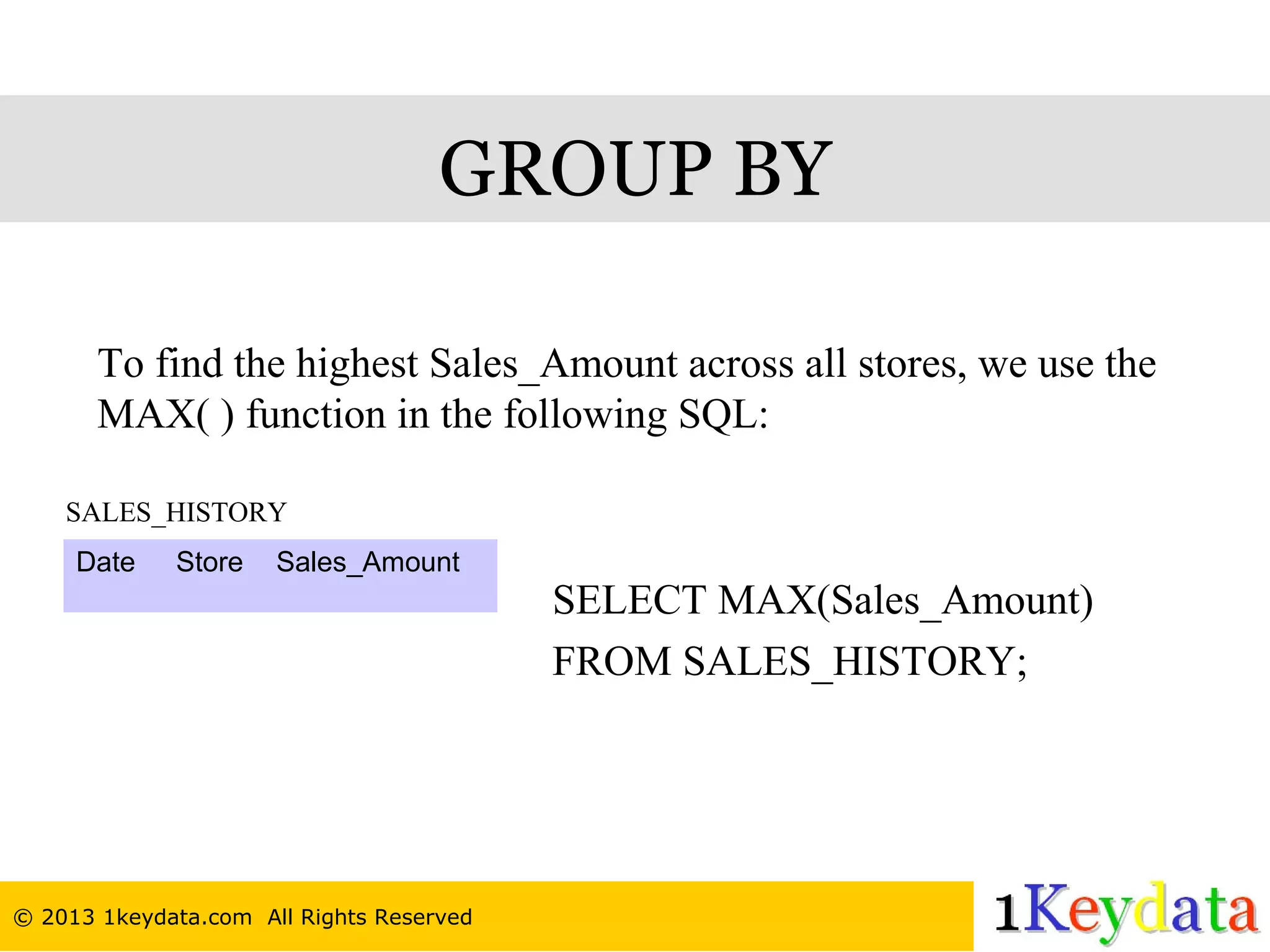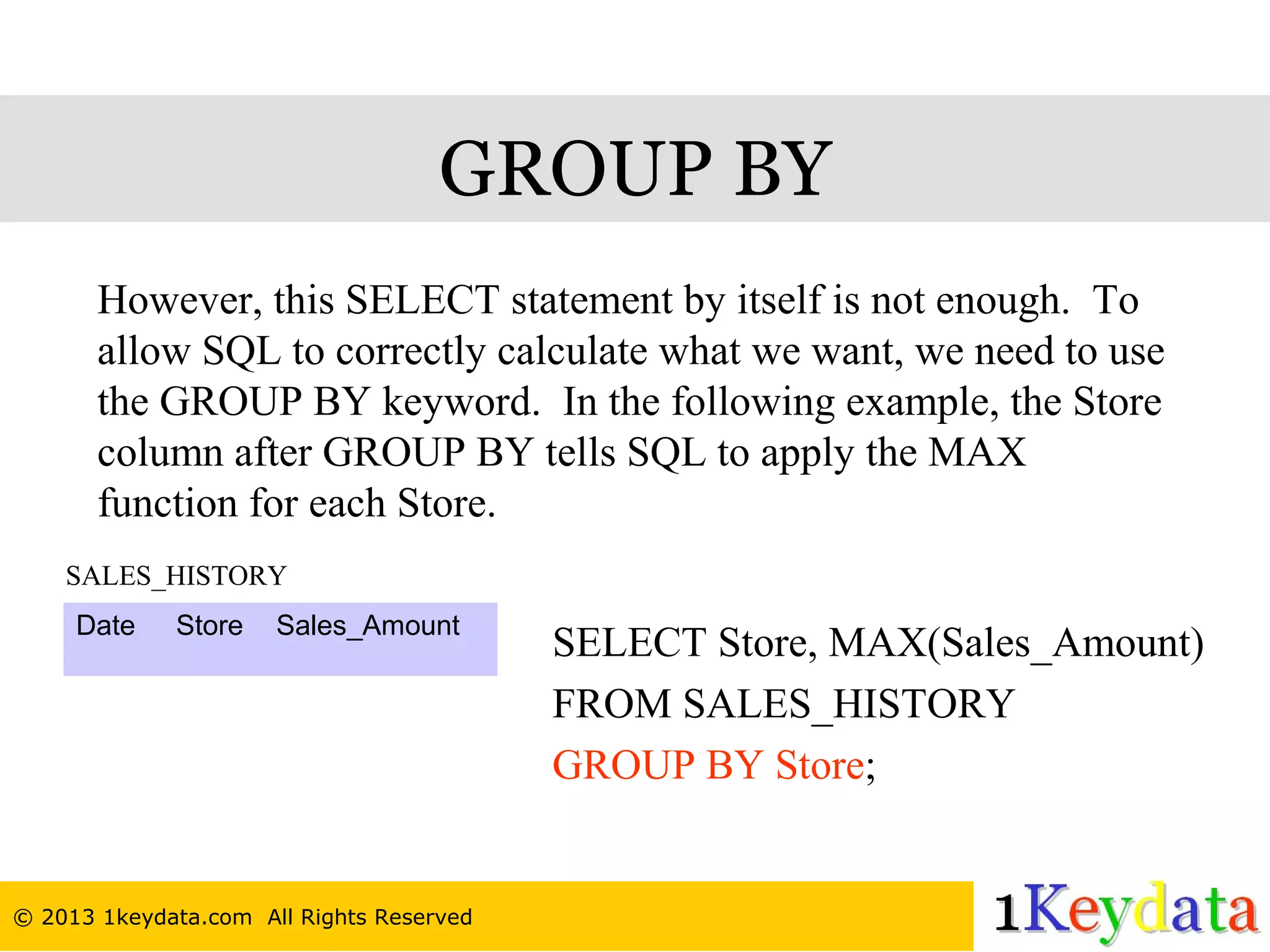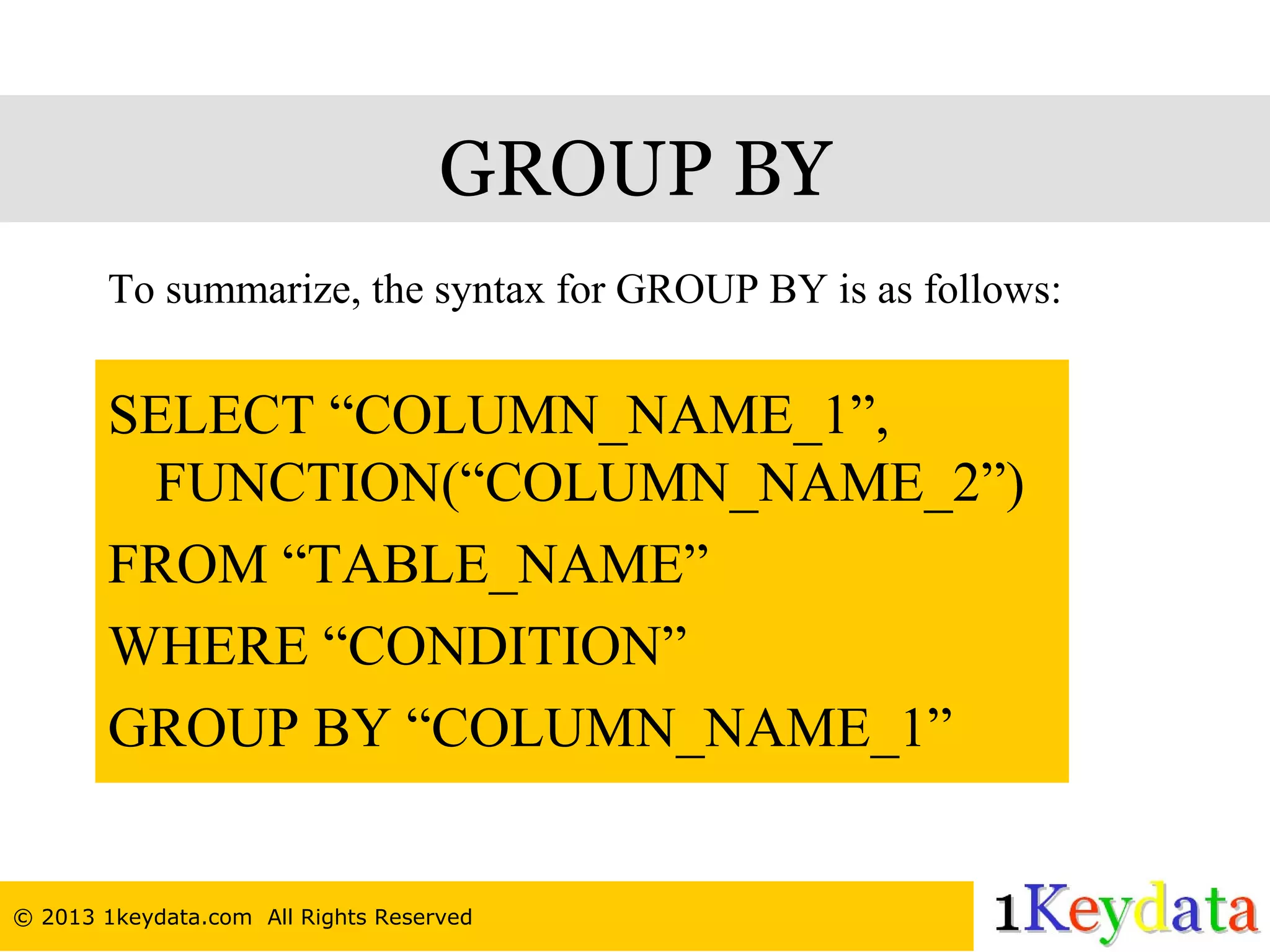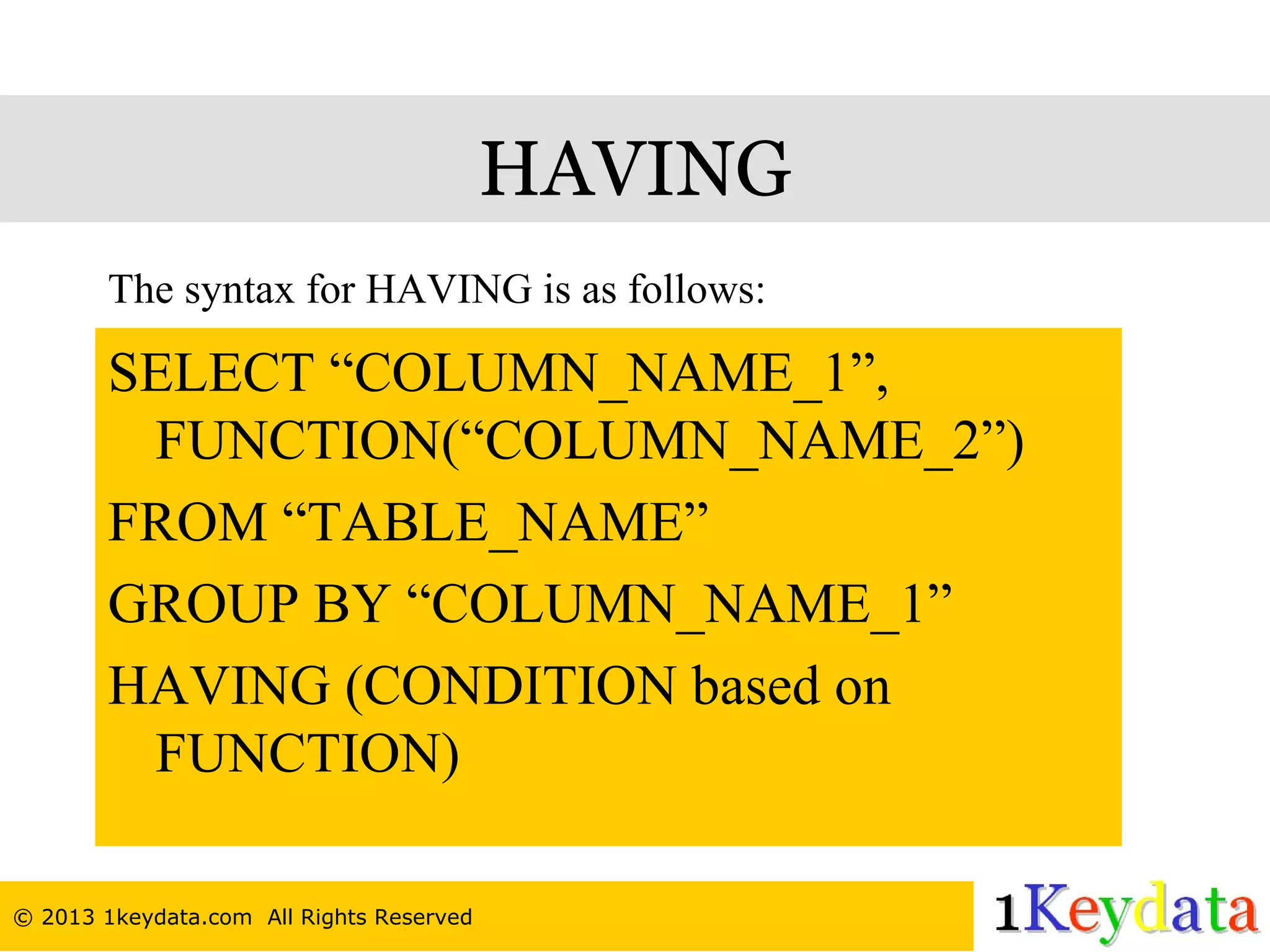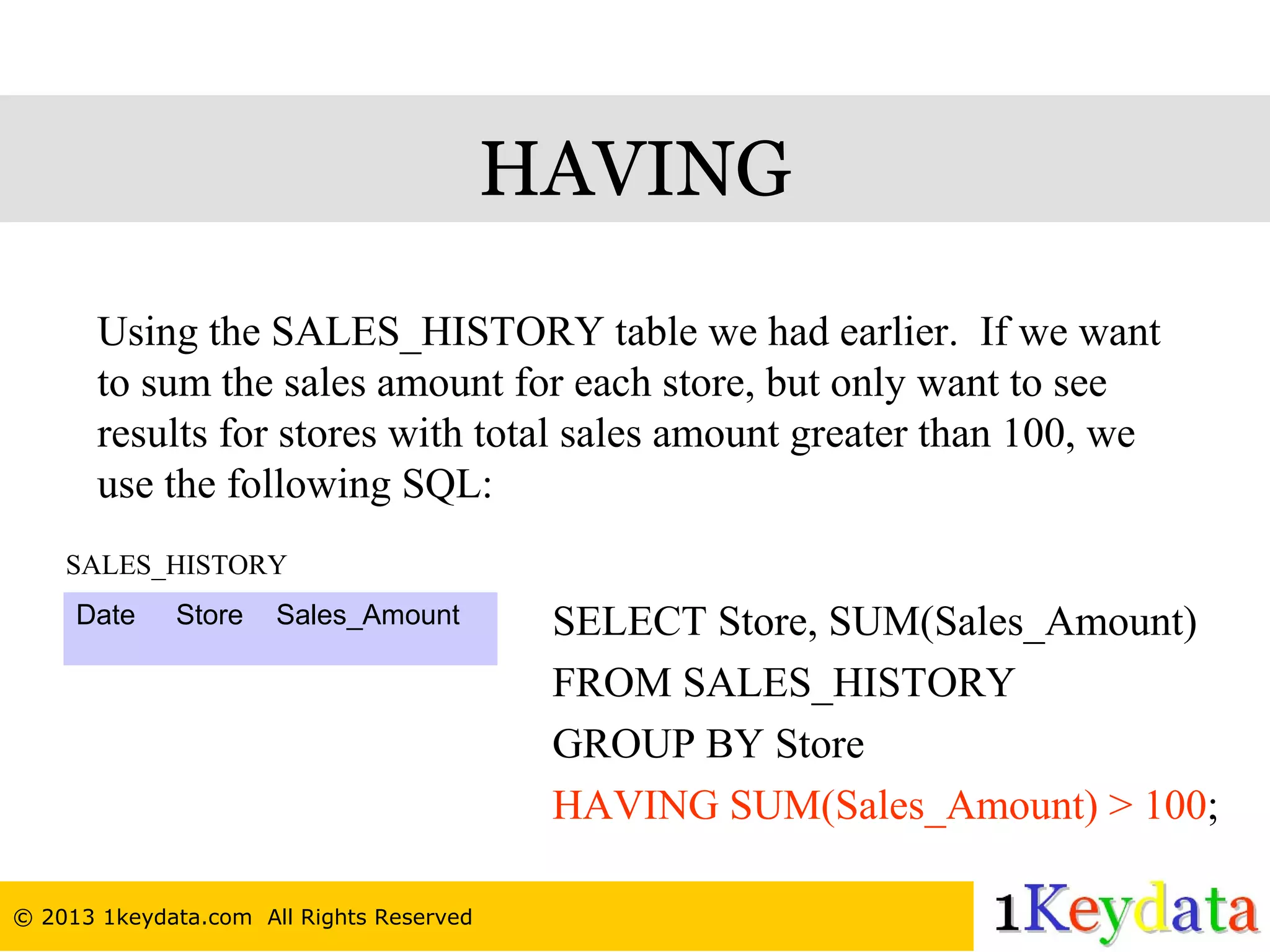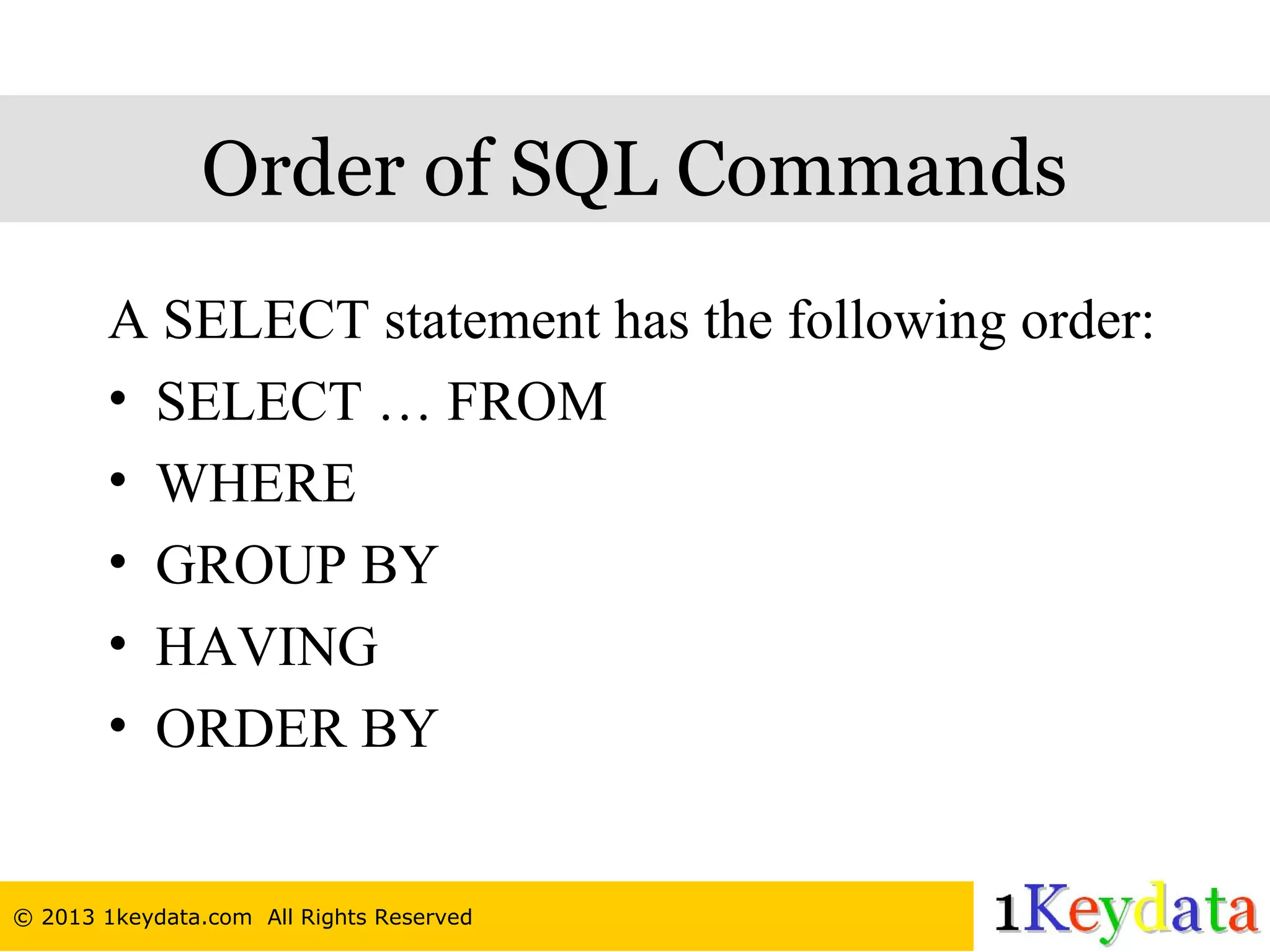This document serves as a basic tutorial for SQL commands, covering essential elements such as database structure, the use of 'select', 'where', 'order by', 'group by', and 'having' commands. It provides syntax examples for retrieving and filtering data from relational database tables, as well as utilizing mathematical functions. The tutorial emphasizes the order of SQL commands and includes practical examples for summarizing data.

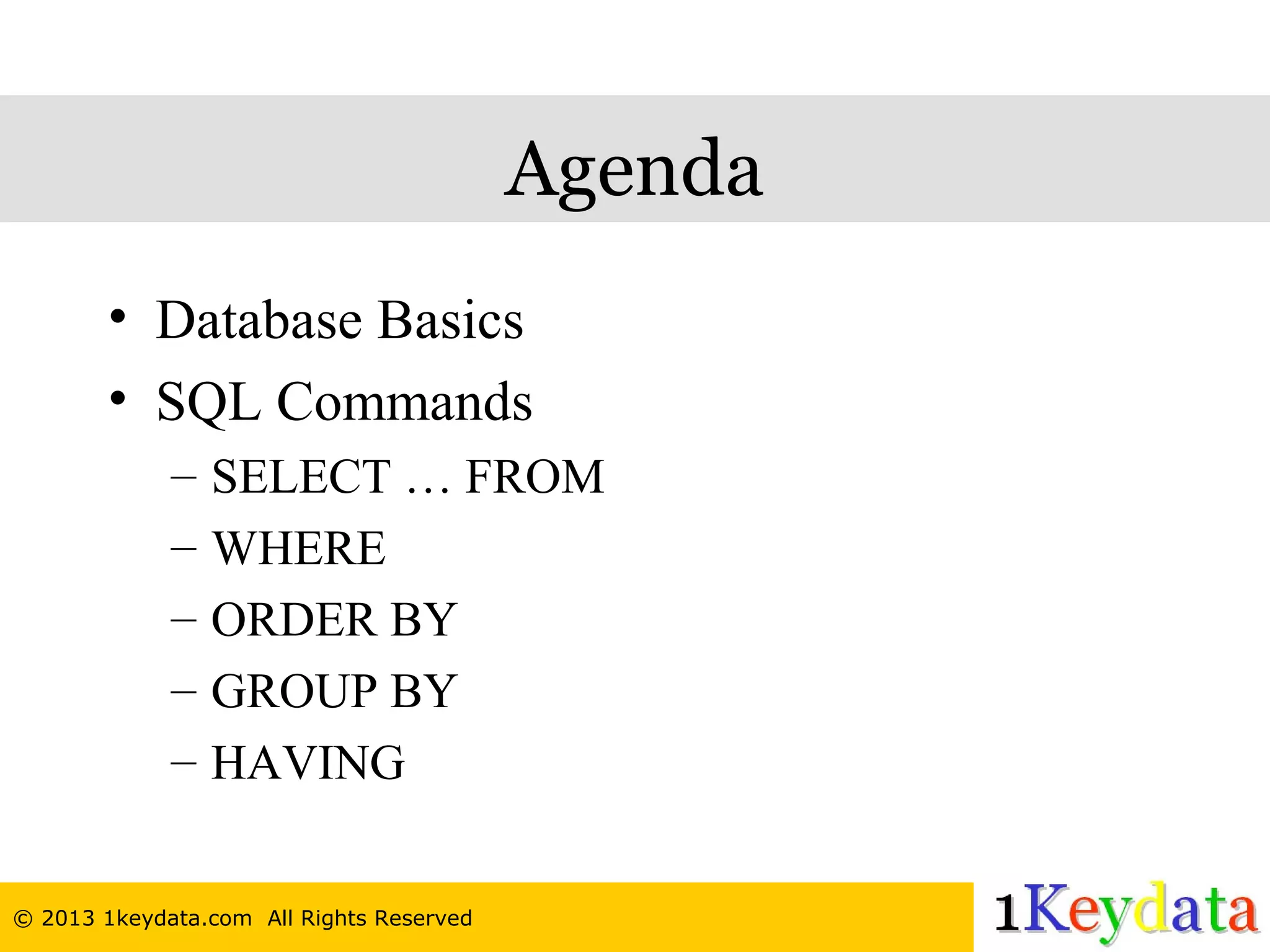
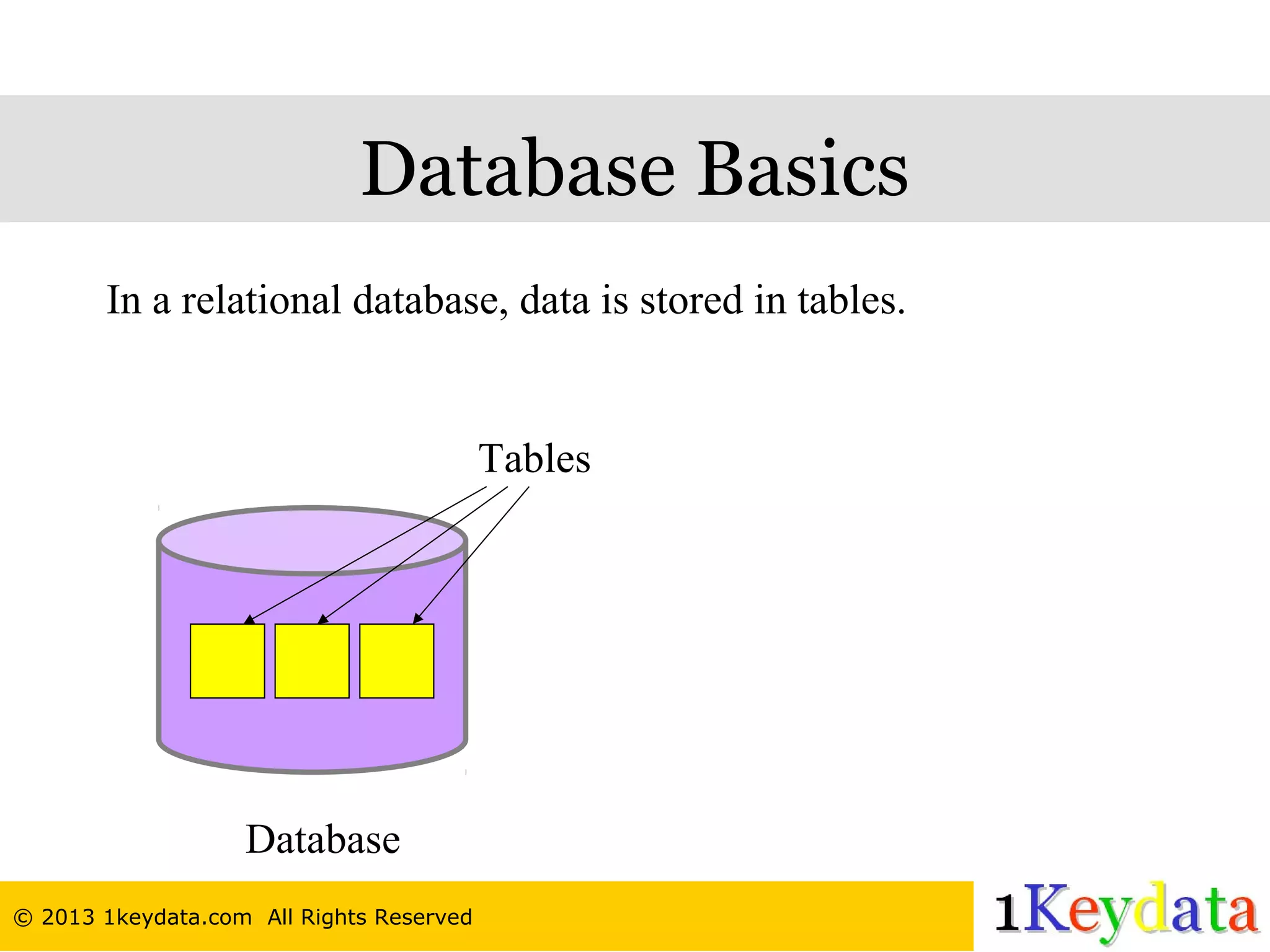
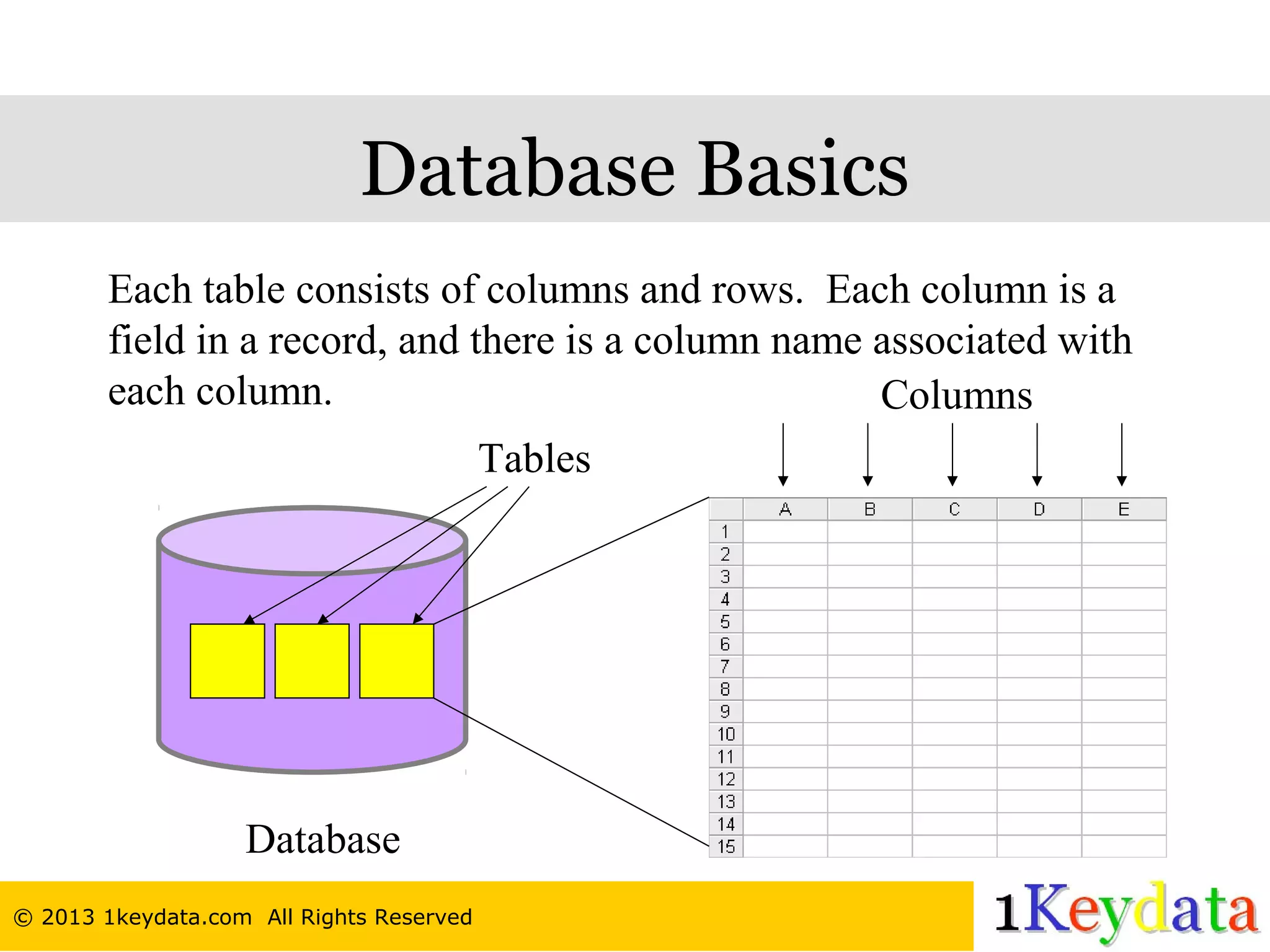
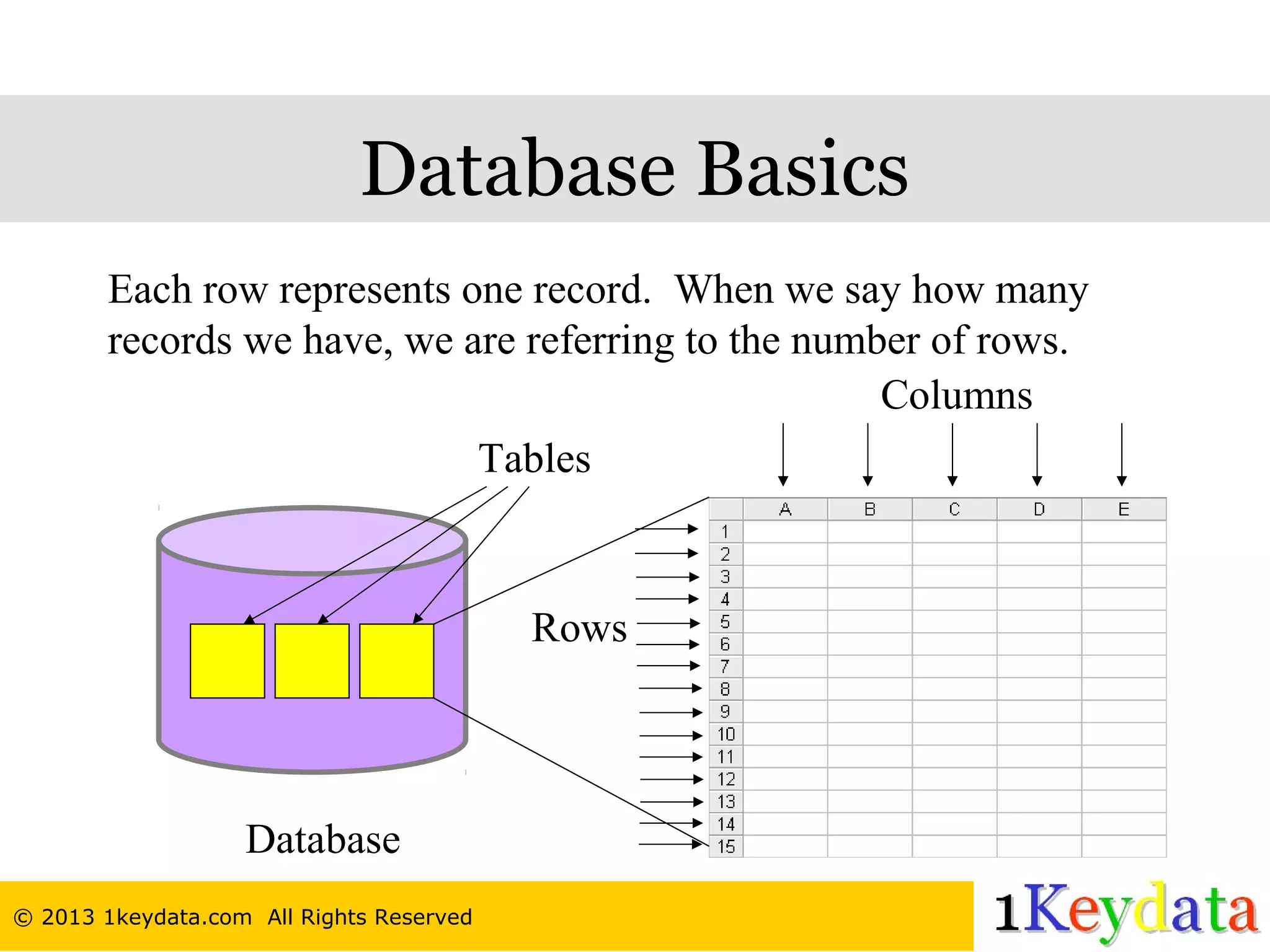
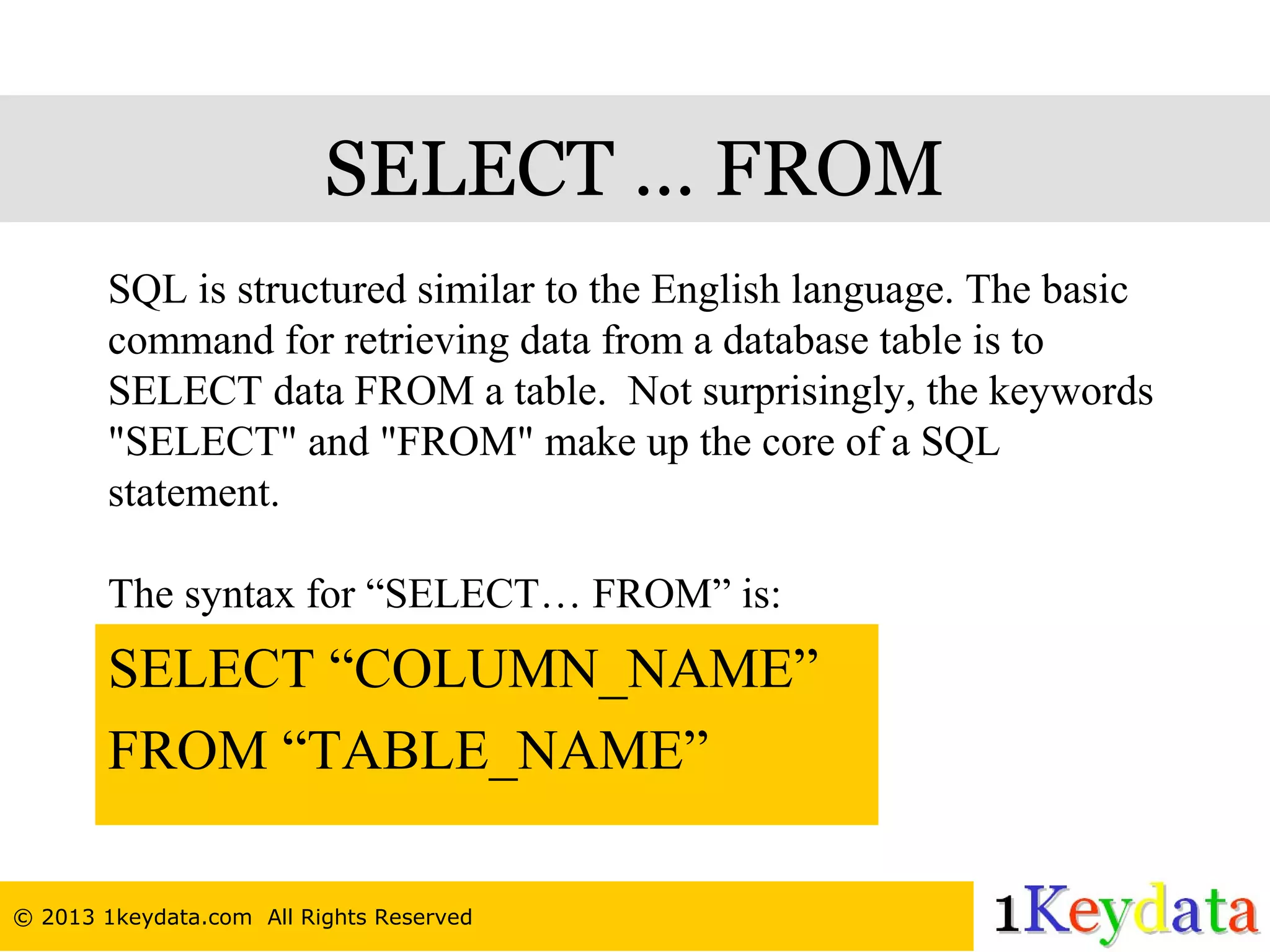
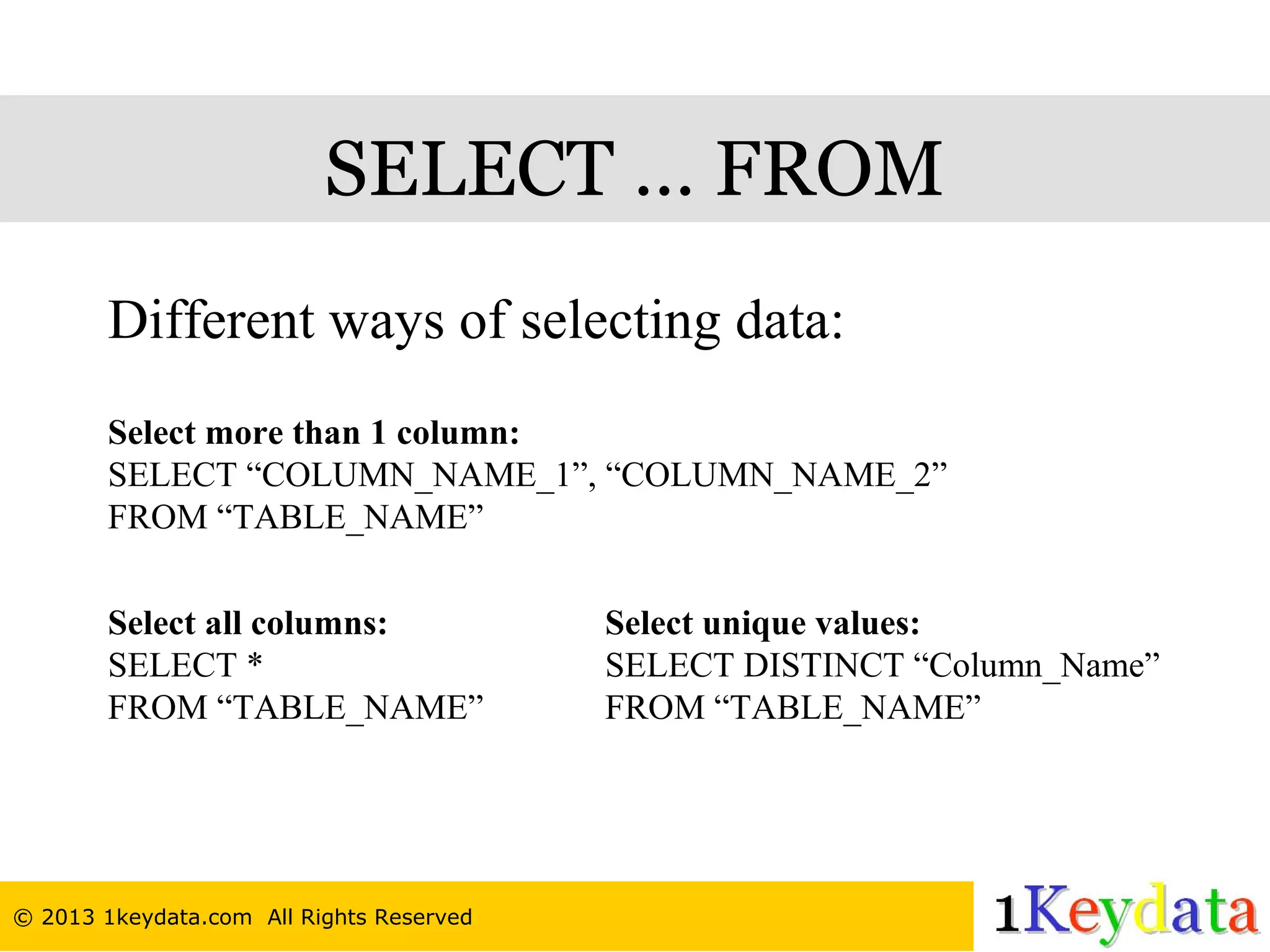
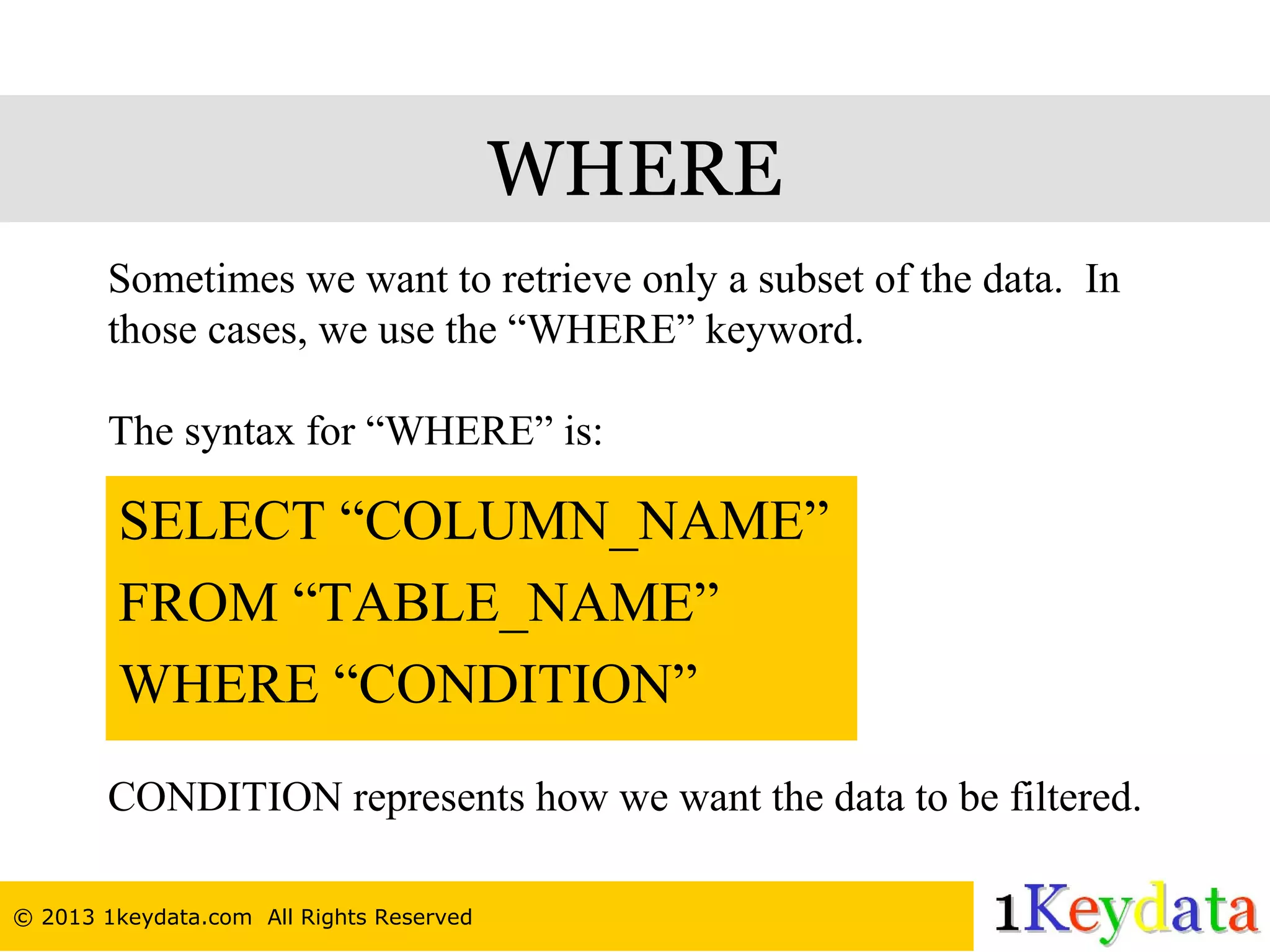
![ORDER BY When we want to list the results in a particular order (ascending or descending), we use the ORDER BY keyword at the end of the SQL statement. The syntax for “ORDER BY” is: SELECT “COLUMN_NAME” FROM “TABLE_NAME” WHERE “CONDITION” ORDER BY “COLUMN_NAME” [ASC | DESC] © 2013 1keydata.com All Rights Reserved](https://image.slidesharecdn.com/sqltutorialbasiccommands-130310014513-phpapp01/75/SQL-Tutorial-Basic-Commands-9-2048.jpg)

